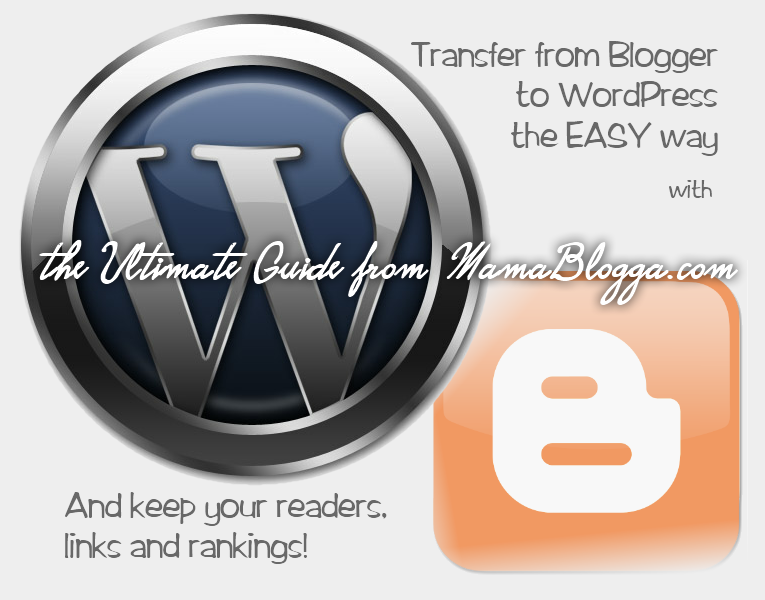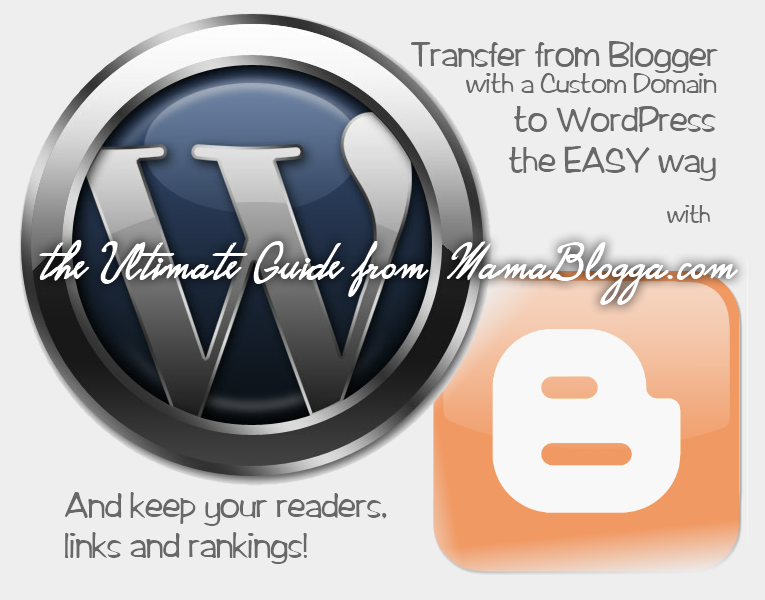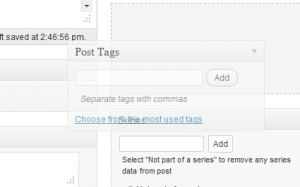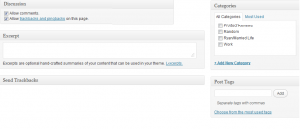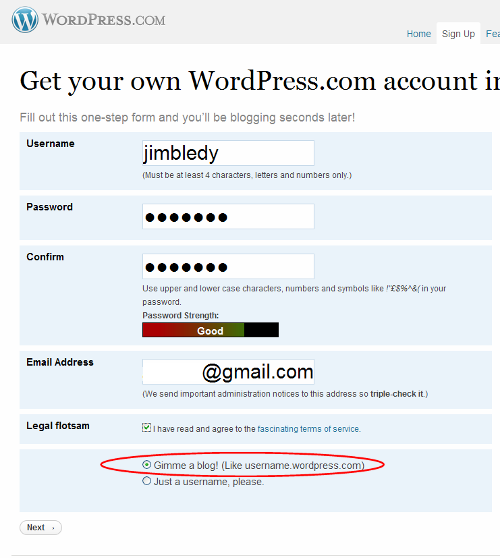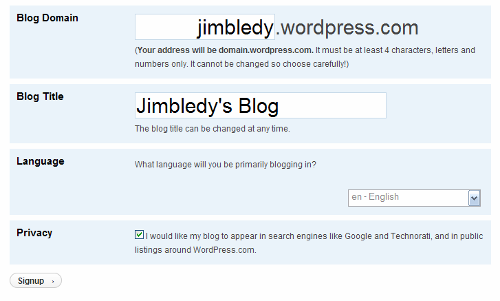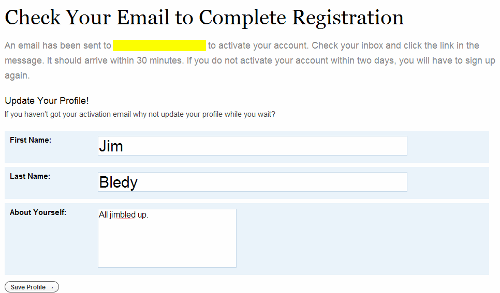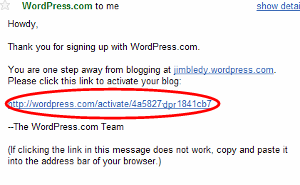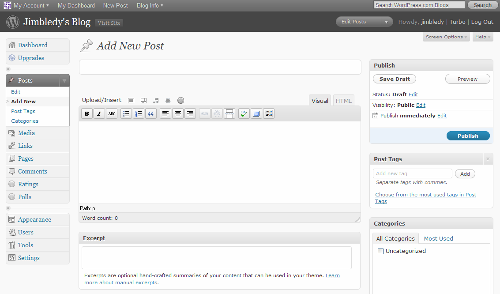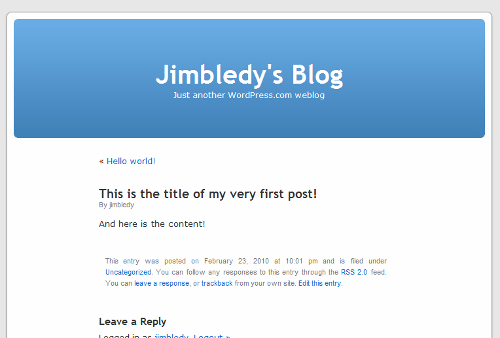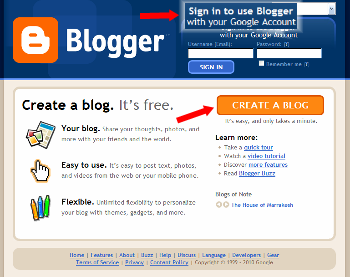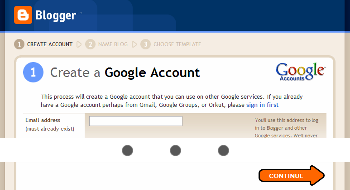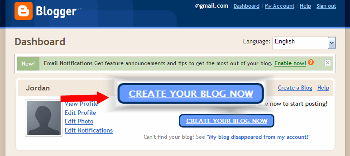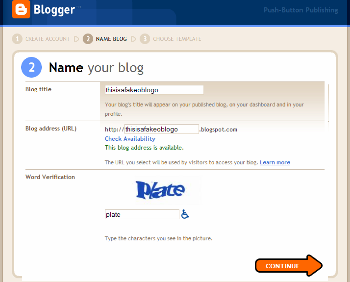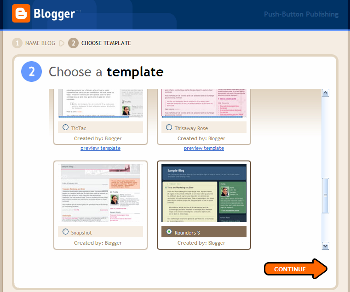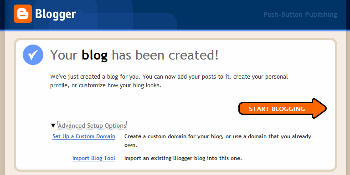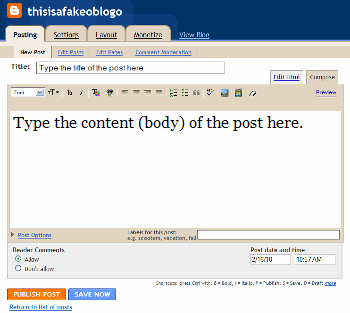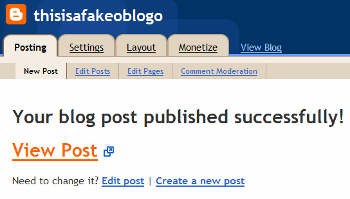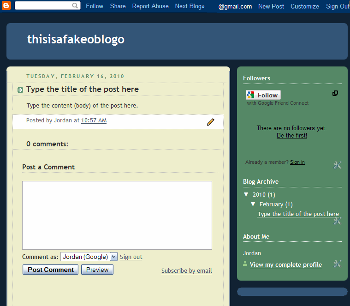There are lots of tutorials on migrating from Blogger to your own WordPress, but this is by far the easiest way to keep your traffic, rankings and subscribers. UPDATED 14 Jan 2013.
Also: check out my guide to setting up WordPress on BlueHost, an inexpensive, WordPress-recommended hosting company!
If you find this helpful, please consider signing up for BlueHost with an affiliate link. I get a percentage of any purchase made through my link.
I made the move from Blogger to self-hosted WordPress five years ago. At the time, I wrote the original ultimate guide to migrating, which I updated in 2009, but a few things have changed in the meantime. So I present the fully updated, all new, easiest ultimate guide to migrating from Blogger to WordPress!
Be sure to check out my article on deciding and preparing to switch your domain. Once you’re sure you’re ready, then here are 10 steps to transferring your blog safely, completely and . . . well, awesomely. This method preserves your links, your subscribers, your comments and your content, and makes the move search engine safe.
Get the goods: a domain, hosting, and the WordPress software
1. Get a domain, preferably “yourblog.com.” Don’t own a domain? I use either GoDaddy or Bluehost (aff) for domain registration. Their prices are okay. I recommend three things here:
- Get private domain registration. No junk mail, no strangers getting your address from your whois info.
- If available, get yourblog.com, yourblog.net and yourblog.org. Sometimes GoDaddy offers a deal where you can get free private registration when you register 3 domains. (Then redirect .org and .net to the .com using account management. Select 301 redirects.)
- If you go with GoDaddy, search for “GoDaddy coupon.” Click on the first result and use whichever coupon will save you the most money (calculate out the % to see which one that is if you have to).
2. Get hosting. I recommend Bluehost.com (I receive a commission off sales through this link, which costs you nothing); they came highly recommended and are a pretty good deal. I’ve used them for over four years and I’ve always been very happy. Also, they’re one of WordPress’s recommended hosts and feature a very simple install for WordPress.
3. Install WordPress. With Bluehost, just login to your control panel, click on Simple Scripts under Software/Services, select WordPress from the list, and click the green Install Now button (under Install on an existing server—even if you’re importing your old blog, you’ll be using a new installation of WordPress). Fill in the forms and you’re done. If your host doesn’t have a similar install, you’ll have to install manually. It shouldn’t be too hard; WordPress gives you instructions (and they claim it takes five minutes!).
Prepare to transfer your feed: you don’t have to lose any subscribers
4. Blogger enables you to transfer your subscribers seamlessly as well. I recommend using FeedBurner. If you haven’t already, sign up for a FeedBurner account (if you need a walkthrough to FeedBurner, check it).
Then, login to Blogger and go to Settings > Other > Site Feed. In the Post Feed Redirect URL box, enter your new FeedBurner address. This will help redirect your subscribers.
If you don’t want to use FeedBurner, you can also use this box to direct your old feed directly to your new blog feed by entering http://YourURL.com/feed (with any folders or anything else in your URL).
Prepare your new WordPress blog: with some fun stuff
5. Login to your WordPress (might take a little time for the installation to “take”). Select “Settings” then “Permalinks.” Select “Custom” and type this line in the box:
/%year%/%monthnum%/%postname%.html
This is to match the post structure of your Blogger blog, to minimize the number of broken links and redirects.
Wendy Piersall has a few more steps to setting up your initial WordPress installation and getting it off the ground. All good steps!
Gidget at Homeschooling Unscripted made the move using the last edition of this guide this month, and she reports that “The SEO Blogger to WordPress plug-in allows a redirect even if you use a different permalink structure – and it also has a single step to import your photos so that the featured images in your theme work.”
To install the plugin, see the directions here.
Move your posts and comments
6. This is the easy part! In WordPress, go to Tools > Import. Select Blogger from the list. You’ll have to install the plugin. Once it’s up and running, enter your Google login information and grant access to your account. Click the “Import” button next to the correct blog and this should automatically transfer all your posts and comments for you. 😀
However, some of your links won’t work anymore because Blogger and WordPress convert post titles into URLs differently—Blogger leaves out stop words like “and” and “the.” You can fix this, too, with another handy plugin, Redirection. Upload it, activate it and you can use it to easily track and redirect individual broken links (for example, from “/this-best-post-ever.html” to “/and-this-is-the-best-post-ever.html”).
There are also some other plugins to do this automatically. To get these (or any) plugins, in WordPress go to Plugins>Add New. Search for the plugins by name or related terms. (Searching for “blogger permalinks” brings up some plugins that can help with this and some of the other technical stuff.)
Transfer your feed: keep all your subscribers
7. If you’re using FeedBurner, login, go into the feed and click on “Edit Feed Details.” Change your Original Feed to http://YOURNEWURL.com/feed/ .
8. In WordPress, you’ll probably want to use FeedBurner as well, and if so, there’s another plugin to integrate the two services perfectly, FeedSmith, owned by FeedBurner (which is owned by Google). (FeedSmith is still available. I promise. But you might have to download it and then upload it to the plugins page from your computer.)
If you’re using a plugin to handle redirection, you might also want to redirect your feed url: YOURNAME.com/feeds/posts/default to YOURNAME.com/feed/ .
Change over the URL: the final steps to move your blog
9. Back in Blogger, select Settings for the blog you want to transfer. Select Basic and scroll down to Publishing. Click the top link, “Custom domain.” By Blog Address, click on +Add a custom domain. You already own a domain, so you’ll want to Switch to advanced settings. Type in your new domain, www.yourblog.com, and save. (Getting Error 32? Check out the instructions in this comment.)
Now your links will transfer automatically to your own domain (though sometimes Blogger will show visitors a page to make sure they’re not being taken to a different site accidentally), but you’ll need one more step to transfer your blog home page over. Already using a Custom Domain? Check out the Ultimate Guide to Transferring from Blogger with Custom Domain to WordPress!
10. Alternatively, still in Blogger, go to Layout>Edit HTML. Place the following code anywhere after <head>:
<meta content='0; url=http://YOURNEWURL.com/' http-equiv='refresh'/>
This sends visitors to your blog homepage directly to your new URL, and, as Sebastian’s Pamphlets says, is a search-engine safe method of redirection.
Like the change in step 9, this can show visitors a warning page that they’re being taken to another domain. Some might think that it’s just as good to put a link to your new URL in your old blog and leave it up. However, it’s better for your search engine rankings to transfer it like this—if search engines see two copies of your content around the Internet, they may try to penalize one or both of your sites for “duplicate content.”
Be sure to test your main blog URL as well as some of your old post URLs to make sure everything is working, and of course, be subscribed to your feed to make sure that’s in order as well.
And you’re ready to blog on wit’ yo’ bad self.
Note: You might have to import your images to WordPress as well, but I haven’t. However, the last plugin listed in #5 can handle this too!
Feeling brave? There are other ways to transfer your blog from BlueHost to WordPress, but they are more technical. This tutorial seems to be the easiest of these. Good luck!
Also: check out my full guide to setting up WordPress on BlueHost, an inexpensive, WordPress-recommended hosting company!
If you find this helpful, please consider signing up for BlueHost with an affiliate link. I get a percentage of any purchase made through my link.
Disclosure: the Bluehost link is an affiliate link.
